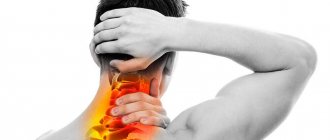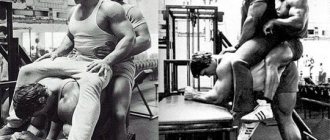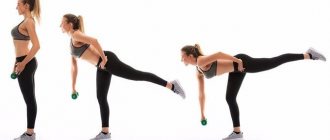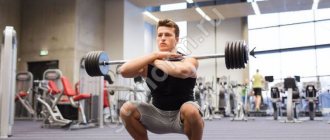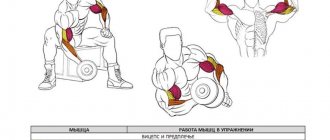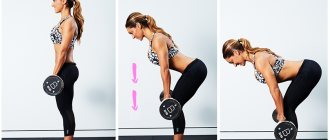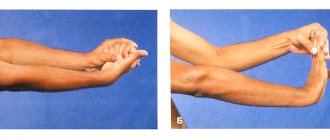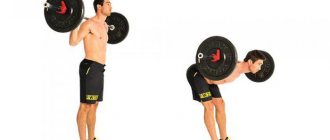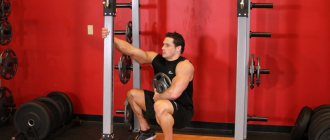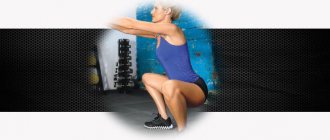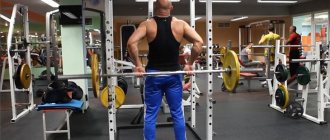A muscle group such as the forearm is a problem area for many athletes. The fact is that standard arm exercises practically do not affect this area. Moreover, they specifically try not to load the forearm. This is due to the fact that, being a relatively weak muscle group, the forearm quickly gets tired, and the target muscles do not receive the proper load. But it needs to be developed, and there are at least two reasons for this. Firstly, the body must be developed proportionally. And secondly, the stronger the forearm, the stronger the grip. Well, without a strong grip there is nothing to do in men's sports.
Many have noticed that the forearm of ordinary loaders looks much stronger than that of professional athletes. The fact is that in normal training the athlete acts on this muscle group only by flexing and extending the hand, as well as squeezing the palm. However, the forearm also has such a function as rotation, and a considerable part of its bundles are intended for this very purpose. So it turns out that someone who does a variety of strength work pumps up their forearm better than a gym regular. It is in the rotation of the hand that the whole point of the exercise that we will talk about today lies.
Zottman curls are an old exercise that few people now use in their training, but in vain. It allows you to work your biceps and forearm at the same time. Let's find out how this exercise can be useful in modern bodybuilding.
general characteristics
This exercise, as already mentioned, immediately trains the muscles of the shoulder and forearm. This is achieved through supination and pronation of the hand. The exercise has rather specific objectives, so not all athletes use it in their training. In addition to working the muscles, it helps strengthen your grip and improve neural communication. The technique is easy to understand, but difficult for the muscles. Therefore, at first it is recommended not to rush to increase the weight of dumbbells. By the way, Georg Zottmann trained with dumbbells weighing 50 kg. But before achieving such indicators, you need to master the technique.
Zottaman curls are usually performed at the end of a biceps or back workout, and also as a warm-up before working the biceps. They are suitable for athletes of any level. For beginners, the exercise is interesting because of its neural connection training and its versatility. And experienced weightlifters choose it to improve the functional qualities of the arms, which increases strength in the deadlift and bench press.
What muscles work
At first glance, this exercise looks like a simple biceps curl. However, if you look closely, there is some difference in it, thanks to which it turns out to load more muscles. As a result, when performed correctly, Zottman curls allow you to work the following muscles:
1. Brachioradialis muscle (brachioradialis).
2. Flexor carpi radialis.
3. Finger flexors.
4. Pronator teres.
5. Biceps (long and short heads).
At each stage of movement, one or another muscle receives load. By the way, the inconspicuous brachioradialis muscle, when performed correctly, will make itself felt by a burning sensation in the shoulder area. If it is there, then everything was done correctly.
Working muscles and joints
The main working muscle groups during Zottman curls are the biceps, forearm and brachialis, but the shoulders, which often steal the load when bending the arms, can be isolated in this case. It goes without saying that the load can be shifted more or less onto the biceps and brachialis; if you lean forward, the brachialis will be activated more; if you stand straighter, you will work the biceps better.
It is preferable, of course, to emphasize the load on the brachialis, since the biceps receives more load during other exercises. In general, the brachialis is a very important muscle, it is located between the triceps and biceps, so its hypertrophy can make the arm not just bigger, but also better.
Only one joint works, not counting the hand, which simply performs mechanical work in the upper and lower phases of the range of motion. This has its advantage - the target muscle works more isolated, but the athlete is forced to use less weight. The point is not only that a small number of working joints increases the risk of injury, but also that a small number of synergist muscles make the structure less stable, and therefore the nervous system produces weaker nerve impulses.
In practice, this means that, let’s say, you perform Zottman curls with 20 kg dumbbells, and you can do deadlifts with a 200 kg barbell, yes, during the first exercise all 20 kg will fall on the target muscle, and in the second exercise only, relatively speaking, 15% , but these 15% of 200 amount to 30 kg, which force the body to innervate the muscle more strongly. This is why compound exercises are the only way to build muscle mass!
Read more: Drying the body for girls step by step instructions
1. Brachioradialis muscle (brachioradialis).
2. Flexor carpi radialis.
3. Finger flexors.
4. Pronator teres.
5. Biceps (long and short heads).
At each stage of movement, one or another muscle receives load. By the way, the inconspicuous brachioradialis muscle, when performed correctly, will make itself felt by a burning sensation in the shoulder area. If it is there, then everything was done correctly.
Execution technique
So, before you start pumping up your arms, you need to take the starting position: take dumbbells in your hands, stand straight, straighten your arms, press your elbows to your body, and turn your palms towards each other. It's time to start bending. As you exhale, bend your arms. In the very first stage of the movement, the palms need to be turned upward. At the top point you need to pause so that the biceps receive maximum load.
Now you can proceed to the next stage - lowering the dumbbells. First, you need to turn your wrists so that your palms face down. Gently, along with inhalation, the arms return to their original position. That's basically it.
Zottman bicep curls
One of the most effective exercises for biceps , which has been undeservedly forgotten. It was invented at the end of the 19th century by the famous strongman of that time, Georg Zottmann, and instantly gained recognition in all athletic circles, as it extremely effectively develops overall arm strength. All three muscles that flex the elbow are loaded equally strongly. This is the main secret of the effectiveness of the exercise. The brachialis muscle runs under the biceps, active development of which can increase its strength. And this, in turn, almost doubles the power of the arms in bending efforts.
PERFORMANCE
- Take the starting position: feet shoulder-width apart, dumbbells held on the sides of the thighs with a reverse grip (palms forward). Legs slightly bent at the knees, abs tense, back straight.
- Start lifting both dumbbells up at the same time. Elbows must be absolutely motionless.
- When the dumbbells reach the top point of the amplitude, they need to be rotated inward. At the same time, the grip will change to a straight line (palms facing outward).
- Without changing your grip, slowly lower the dumbbells to the starting position.
- Keeping your elbows slightly bent, stop in the bottom position.
- Next, turn your hands again with your palms facing forward (as before starting the repetition) and get ready to do the next approach.
NOTES
[advertisement]
At the end of the approach, when there is no longer any strength left to perform the exercise with both hands, do a couple of repetitions alternately with different hands. If suddenly your wrists cannot withstand this exercise, then it makes sense to strengthen them with straight and reverse grip lifts, as well as wrist curls. When the Zottman curl becomes familiar to you, you can perform a “mirror” version of it. Those. The exercise starts with a forward grip and ends with a reverse grip. Perform the same number of sets of these two options per workout. You can significantly increase the effectiveness of the exercise by including it in trisets. Do standing barbell raises as your first exercise, Zottman raises as your second, and reverse-grip barbell raises as your third. When you change your grip during the movement, you may find yourself spreading your elbows out slightly. This will significantly reduce the efficiency of the lifts. So keep your elbows almost pressed to your body.
METHODOLOGY
Zottman raises should be done at the end of the workout, because... This exercise puts a lot of stress on the forearms. And with “tired” forearms, the effectiveness of basic biceps exercises drops significantly. It is better to perform Zottman raises together with other exercises to increase the volume of the biceps. The number of sets may vary, but we recommend doing 8-12 reps in 3-4 sets. Rest between sets - 1-2 minutes.
If you are interested in how running and bulking can be combined with each other, you can read about it on the website idealmuscle.ru
Common Mistakes
As a rule, when performing Zottman curls, athletes make the following mistakes: ignoring warm-up, improper breathing, heavy weight of dumbbells.
It is important to remember that the exhalation is done at the highest point of the amplitude. You should not do it at the bottom or in the direction of travel. This can reduce your breathing and make your workout more difficult.
As for the warm-up, before you start Zottman curls, you need to do a simple complex to warm up the arm muscles. This can be either regular rotations or work with light dumbbells (press, rotation, stretching).
What other exercises will help work out the forearm?
- The best way to do this is to curl your arms with an overhand grip. Can be performed with different types of projectiles. Features include smooth movements.
- Bend your arms at the wrists. It can also be performed with different projectiles. It is best to hold them alternating: palms up and then down.
- Wrist curls while standing while holding a barbell behind your back. In this training, you need to position yourself with your back to the racks and take a barbell to do extension and flexion; it is very important to ensure that the elbow joint does not bend.
- Rotation of the handle with a load suspended on it.
Zottman curl video
Useful tips
The elbow flexor will work much better if at the top point, when the dumbbells are at chest level, you move the elbow joint down slightly. When you feel very tired, you can put the dumbbells down and vigorously shake your arms for a few seconds. This simple manipulation will take the pressure off your fingers, and you can continue doing Zottman curls.
You need to rotate your hands very carefully while lifting and lowering. The muscles responsible for forearm rotation are good at stabilizing these movements. However, if you make a dash, they may get hurt. It is recommended to do this exercise at the end of your workout, as it puts a lot of stress on the shoulder joint. It is important to choose the right dumbbell weight. If 12 repetitions are easy for you, the weight is too small. It is necessary that by the 8th repetition there is no more strength.
The most important thing in any workout is technique. Therefore, if you cannot do everything correctly with both hands at once, try alternating hands, focusing on each of them.
Zottman curls, exercise technique
Bend your elbows vigorously while rotating your hands (pronation) so that your palms are again facing forward in the upper position. Pause for a moment in this position and smoothly return the dumbbells down, performing a reverse rotation with your hands. Immediately begin to lift them again, pronating. Complete the required number of repetitions.
Zottman Curls. Start. Zottman Curls. Finish. Side view. Start. Side view. Finish.
The exercise develops the muscles of the forearms and biceps, and strengthens the grip.
Zottman curls can easily be called one of the most unpopular exercises, although it cannot be called ineffective. The exercise puts stress on the biceps and helps work out the brachialis and brachioradialis.
- muscles that will add volume to your arms and increase grip strength. But the main thing is that although Zorttman curls are partly an isolating exercise, they will allow you to work with no less working weight than in the basic ones.
Safety
This exercise is considered completely safe, but if you neglect the technique, problems may arise. The first thing to remember is that bending is done smoothly, using muscle strength. Any jerks are unacceptable. Otherwise, the shoulder joint, which is quite weak in many athletes, may receive unwanted stress.
In addition, to protect the joint, you need to work with a comfortable weight. Of course, it may be different for each athlete. But first, it is recommended to take 3 kg dumbbells. Don't let the low weight bother you. It is needed in order to hone the technique and feel the work of the muscles.
The back should be motionless throughout the entire movement. Don't try to lift dumbbells using your back. There will be no sense in such a performance. Additionally, it can be dangerous for those with weak backs.
pros
In addition to working on the brachialis and brachioradialis, this exercise has another advantage.
In a positive phase
The Zottman curl movement is identical to dumbbell or barbell curls and is a basic exercise. During the lift, the biceps, brachialis and brachioradialis are involved. You lift dumbbells using three muscles, which means you can afford a high working weight.
In a negative phase
you turn your wrists away from you and lower the dumbbells. At this moment, you are already doing an isolating exercise with a load on the brachioradialis, but with a fairly large weight, which the biceps, brachialis and brachioradialis helped you lift before. But you can still handle this weight in the negative phase without any problems, since in the negative phase your muscles are always stronger than in the positive phase.
It turns out that from a biomechanical point of view, the force will be on your side
both in the positive and negative phases of the movement. This means you can work with a good working weight. Almost the same as dumbbell lifts!

